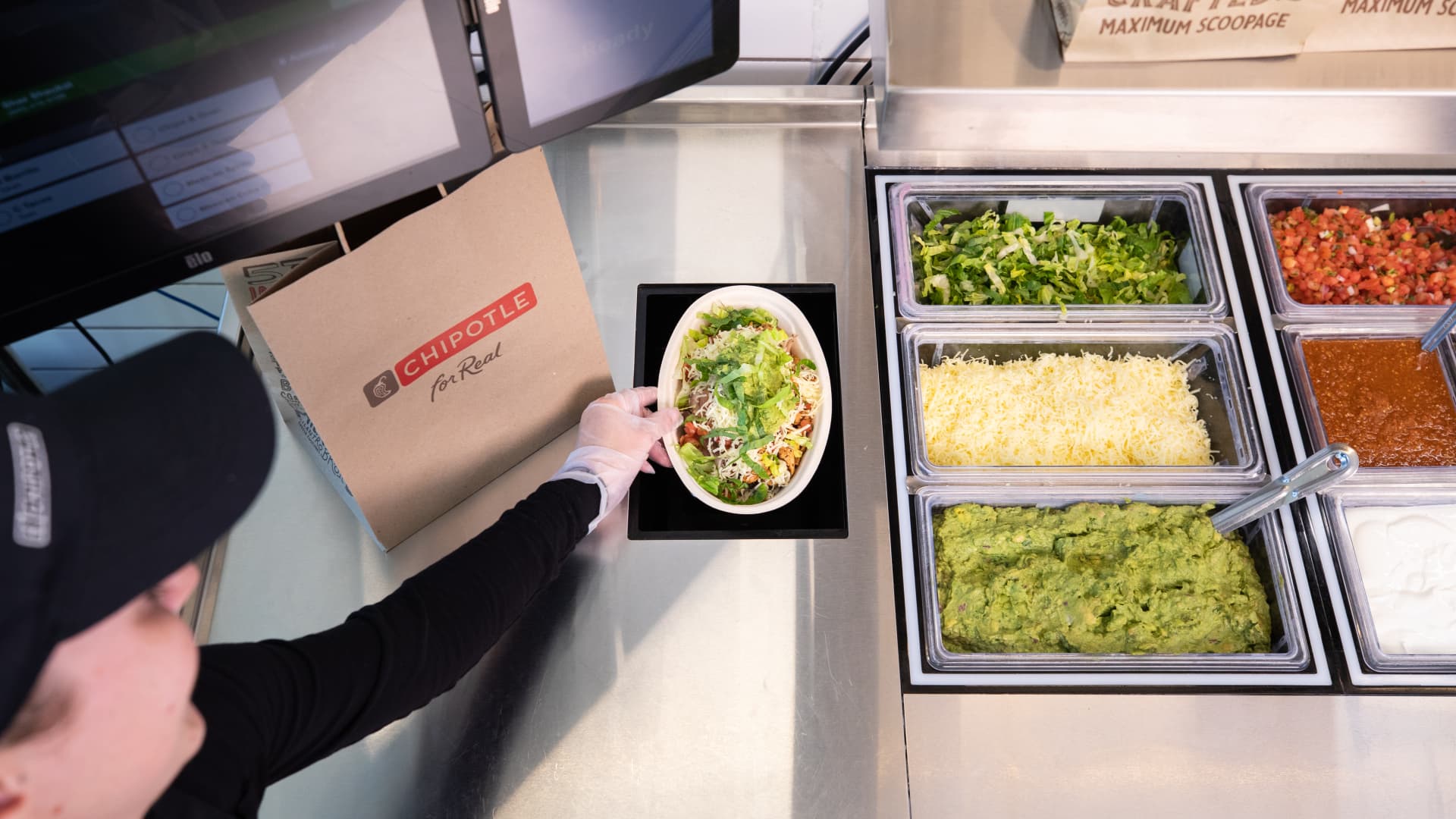
Customers shop at a Best Buy store on August 24, 2021 in Chicago, Illinois. Best Buy reported an increase in second-quarter sales of nearly 20% as consumers purchased electronics to adjust to lifestyle changes related to the ongoing pandemic.
Scott Olson | Getty Images
Best Buy on Tuesday beat Wall Street’s revenue estimates for the fiscal first quarter even as customers faced high levels of inflation and the company lapped a year-ago period fueled by Covid stimulus.
Shares fell more than 3% in premarket trading after rising about 9% earlier.
Here’s how the retailer did in the three-month period ended April 30 compared with what Wall Street was anticipating, according to a survey of analysts by Refinitiv:
- Earnings per share: $1.57 adjusted vs. $1.61 expected
- Revenue: $10.65 billion vs. $10.41 billion expected
Best Buy’s first-quarter net income fell to $341 million, or $1.49 per share, down from $595 million, or $2.32 per share, a year earlier. Excluding items, it earned an adjusted $1.61 per share.
Net sales decreased to $10.41 billion from $11.64 billion a year earlier.
Same-store sales for Best Buy declined by 8% versus the year-ago period, a better performance than the 8.6% drop that analysts expected, according to FactSet.
Investors have scoured retailers’ earnings for signs about the health of the American consumer with inflation at four-decade highs. With Best Buy, some worried the company would be particularly vulnerable to a pull-back. It faced tough comparisons against a year-ago quarter of pandemic-fueled demand for home theaters, computer monitors and kitchen appliances. That caused same-store sales to jump by 37.3%.
Best Buy also told Wall Street at an investor day in March that sales would be softer after two years of very elevated demand. However, Chief Financial Officer Matt Bilunas said the company ultimately anticipated demand above pre-pandemic sales over the next several years.
Walmart and Target’s heightened investors’ concerns last week. Both big-box retailers reported sales growth in the fiscal first quarter, but missed Wall Street’s earnings expectations as fuel and freight costs spiked and consumers’ demand for higher margin, discretionary purchases sank. In particular, Target CEO Brian Cornell said customers skipped over bulky items like TVs and kitchen appliances — merchandise that Best Buy also sells.
The retailers’ results helped lead to a major sell-off on Wall Street last week, which dragged Best Buy’s stock to a 52-week low on Friday.
Those tempered expectations likely set the stage for Wall Street’s positive reaction to Best Buy on Tuesday morning, even as the retailer cut its forecast and warned of tougher times ahead.
Best Buy said it now anticipates full-year revenue ranging between $48.3 billion to $49.9 billion, compared with a prior outlook of $49.3 billion to $50.8 billion. It said same-store sales will decline between 3% and 6%, a sharper drop than the 1% to 4% decrease that it previously anticipated. It expects adjusted earnings per share in a range of $8.40 to $9.00, compared with the prior outlook of $8.85 to $9.15.
CEO Corie Barry said in a news release that the economic backdrop has worsened since the company provided guidance at an investor day.
“Those trends have continued into Q2 and, as a result, we are revising our sales and profitability expectations for the year,” she said.
On Monday, shares rose less than 1% to close at $72.59. The company’s stock is down about 29% so far this year and are underperforming the S&P 500’s year-to-date decline of about 17%.
This story is developing. Please check back for updates.







